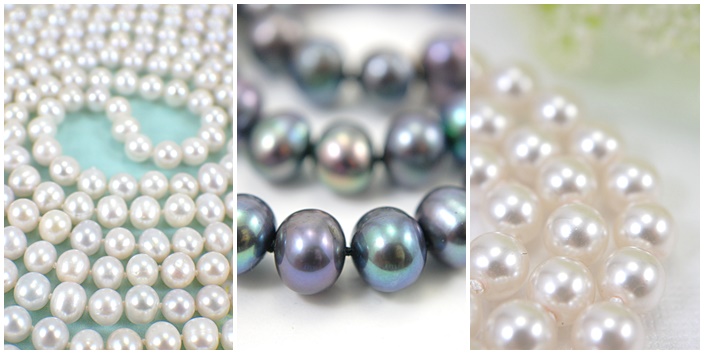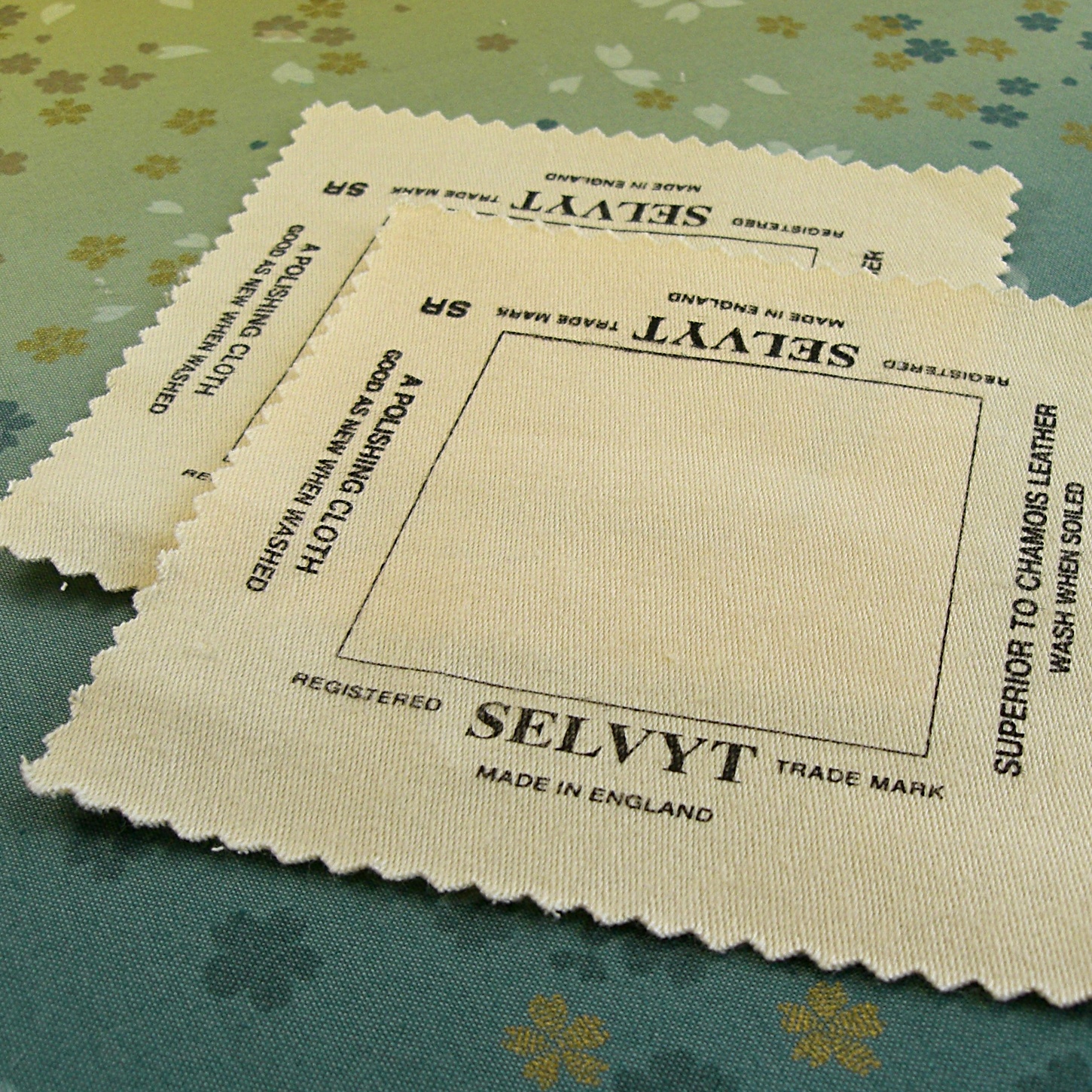
The culturing of pearls has come so far in the past few decades. Once only available to the wealthiest individuals, pearls are now affordable as everyday wear for anyone. A single freshwater pearl that one can buy for pennies today can be finer than those found on crown jewels from centuries past. They look especially fresh and modern with a simple solid color blouse, t-shirt or dress. They are a classic at any time.
Pearls, whether natural or cultured, freshwater or saltwater, are delicate. They are organic material that is softer and more easily damaged than other jewelry components. They require a small amount of special care which is more than made up for by the joy of wearing them. Real pearls are light weight, smooth, lustrous and flattering to all. They softly reflect colors and therefore blend beautifully with whatever you are wearing. They gently warm to the temperature of your body as you wear them. Best of all, pearls are now so affordable and come in so many colors, styles and shapes that you can enjoy owning and wearing your own special collection of pearl pieces.
Pearl Care Guide
- Personal care products like hair spray, lotion and perfume can seriously damage pearls. Apply these products and let them dry completely before putting on your pearls.
- Pearls do not like heat. Do not blow dry your hair while wearing your pearls.
- A build up of body oil and perspiration can dull the luster of pearls. Occasionally wipe pearls gently with a soft cloth.
- Pearls are soft. They should be stored where they are not scratched by other jewelry.
- Do not wear your pearls layered with jewelry that has sharp edges or they can be scratched.
- Do not store your pearl strands in direct sunlight or hanging on a rack or the silk thread may be stretched or damaged. Silk is very sensitive to UV light.
- Unstable dyes from clothing, jewelry pouches, jewelry box lining or tissue paper can permanently transfer to pearls.
- Pearls need to breathe. Do not store pearls in a safety deposit box or plastic bag, except for short periods of time, or they will yellow and craze (crack).
- Wear your pearls occasionally or they can become dry, brittle or damaged from being stored.
- Do not wear pearl jewelry to sleep in.
- Do not wear pearl jewelry to shower, bathe or play sports.
- Avoid contact with chlorinated water and cleansers.
- Do not wear pearl rings and bracelets when washing dishes, gardening, cooking or chores that will get them wet, dirty or scratched.
- Do not use jewelry cleaners, abrasive cloths and ultrasonic or steam cleaners on pearls. Pearls require special cleaning.
Cleaning
It is possible to freshen up your pearls by carefully wiping them with a cloth soaked in very mild, diluted, unscented and uncolored soap solution (never detergent). Some people use Ivory Flakes, but I use Dr. Bronner's liquid baby soap. Follow by wiping them down with a damp cloth and non-chlorinated water. Do this gently so as not to stretch the stringing material. Leave them out for several days to dry thoroughly so that any water that soaked into the holes in the pearls has a chance to evaporate before you store them. If your components tarnish over time, buff them very gently with a soft cloth and avoid pulling on the stringing material. Some special jewelry polishing cloths are coated with an abrasive substance. Avoid using these on your pearls.
Usually it is a good idea to thoroughly clean your pearls right before re-stringing them. This is something that can be done yourself or you can hire a professional to do this for you. I often do this for customers. A thorough cleaning is usually done while they are still on the old stringing material. You can tell if they need to be cleaned by looking at the stringing material and seeing if it looks dirty. Often dirt will build up at the drill holes and is frequently worse near the clasp where the pearls are handled more. There's really no magic or skill involved in cleaning the pearls except for careful handling and keeping them far away from the drain! Use a gentle natural liquid soap (not detergent) with no dyes or perfumes in it and a lot of clean, room temperature, non-chlorinated water in a bowl away from the sink. Carefully clean them by hand without rubbing the pearls together using a very soft cloth (I use a baby washcloth). Some pearl cleaners will use a very soft and very clean manicure brush on the pearls in order to get between them and get to where the dirt tends to accumulate around the drill holes, but I only use a cloth. Rinse several times in bowls of clean water and pat dry with a soft cloth. Put the cleaned strand on a cloth for several days to allow them to air dry all the way through the drill holes. If sending them to a professional stringer after cleaning them you should leave them on the old stringing material.
Re-stringing
Pearl strands tend to break near the clasp where the weight of the strand puts the most stress (especially if you tend to touch or pull on your pearls) and where the clasp can cut into the stringing material. You should check the stringing material at the clasp occasionally to see if it looks weakened. When I string pearls, I put tiny coils of french wire over the stringing material at the clasp to protect the strand from wear at the most vulnerable point.
Pearls are often strung on silk since it is gentle on the delicate pearl. Silk is extremely strong, but since it is a natural fiber, it can stretch and break down over time. If the silk has stretched enough that the pearls slide between the knots, it is time to re-string. Expensive pearls that are worn frequently should be restrung once a year. Others should be restrung as needed--every three years is often suggested. Pearls are usually knotted between each pearl so that they hang beautifully, do not rub against each other, and if the strand is broken, you will not loose more than a pearl or two.
With a little care, your pearls will look beautiful for generations to come.
© 2016 Sue Runyon
